Applying & submitting art to galleries: Carol Naylor
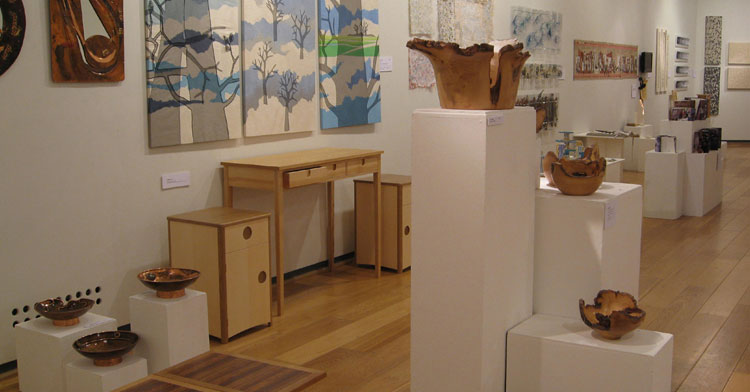
Recent TextileArtist.org interviewee and one of the UK’s leading artists in machine embroidery Carol Naylor has a wealth of experience both curating exhibitions and submitting art to galleries with great success. Who better then to share some words of wisdom with artists hoping to have their work shown at exhibitions?
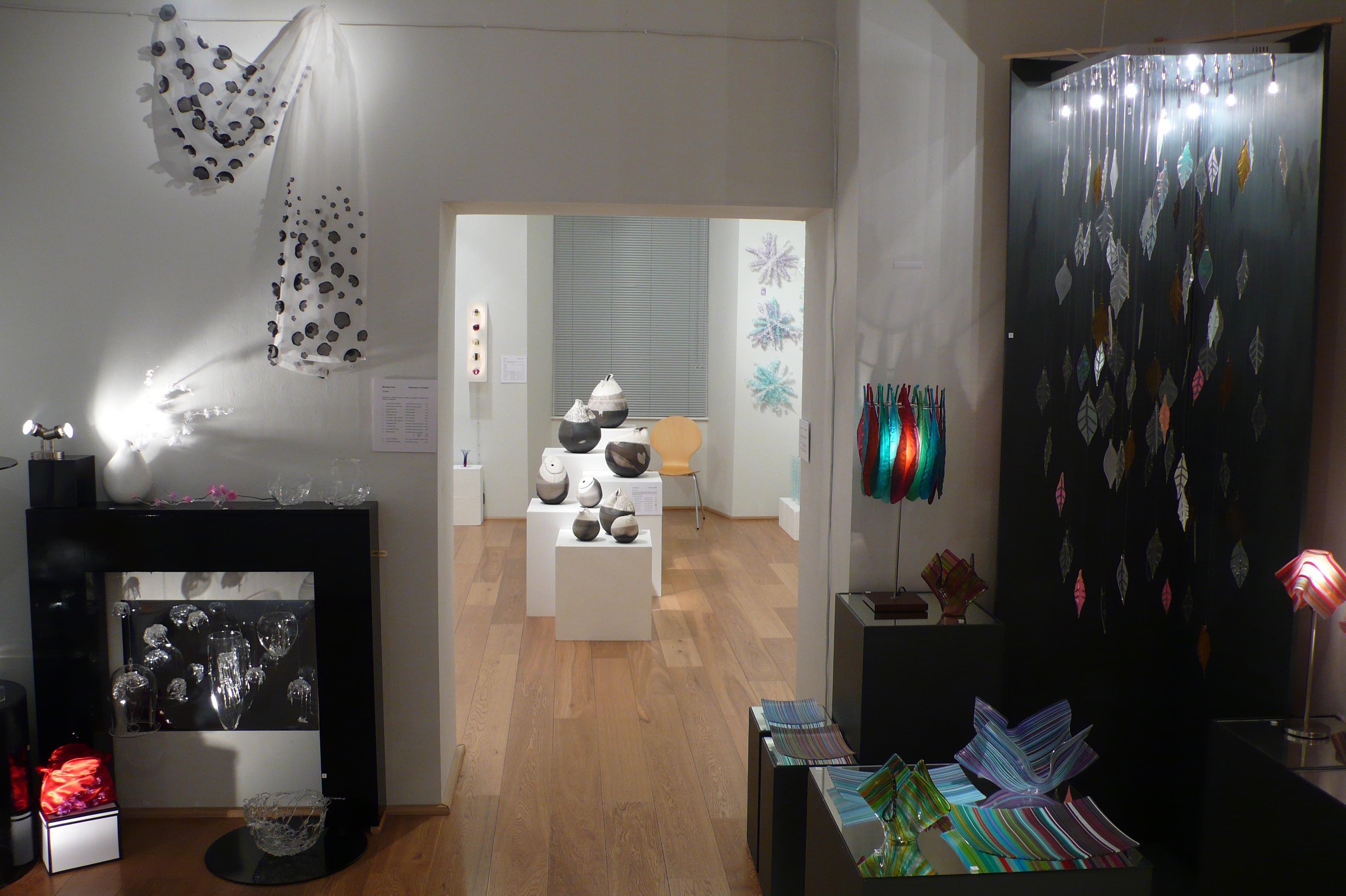
Designer Crafts at the Mall 2008
Artist, teacher, curator
Carol Naylor: As well as making my own work I have been involved in curating exhibitions since 1999. I co-curated Designer Crafts for the Society of Designer Craftsmen at London’s Mall Galleries for 13 years, and in 2012 curated a further exhibition called Everyday Encounters with the William Morris Gallery in Walthamstow. Prior to that as head of Fine Art at Chichester University for quite a few years I was responsible for overseeing the students’ degree shows, so showing other people’s work has played quite a part in my life!
In writing this article I shall try to address some of the issues that come up, suggest pointers for those applying to galleries and for exhibitions, and also highlight some of the problems that I have encountered along the way. I hope this will prove of interest and of value to readers, not just to those who are embarking on a career in the arts but to the more experienced of us as we do make mistakes sometimes!
So here goes…
I am constantly amazed at how bad artists are at presenting their work and reading the criteria for selection. The following may seem obvious to experienced exhibitors but it is amazing how often incomplete applications come in!
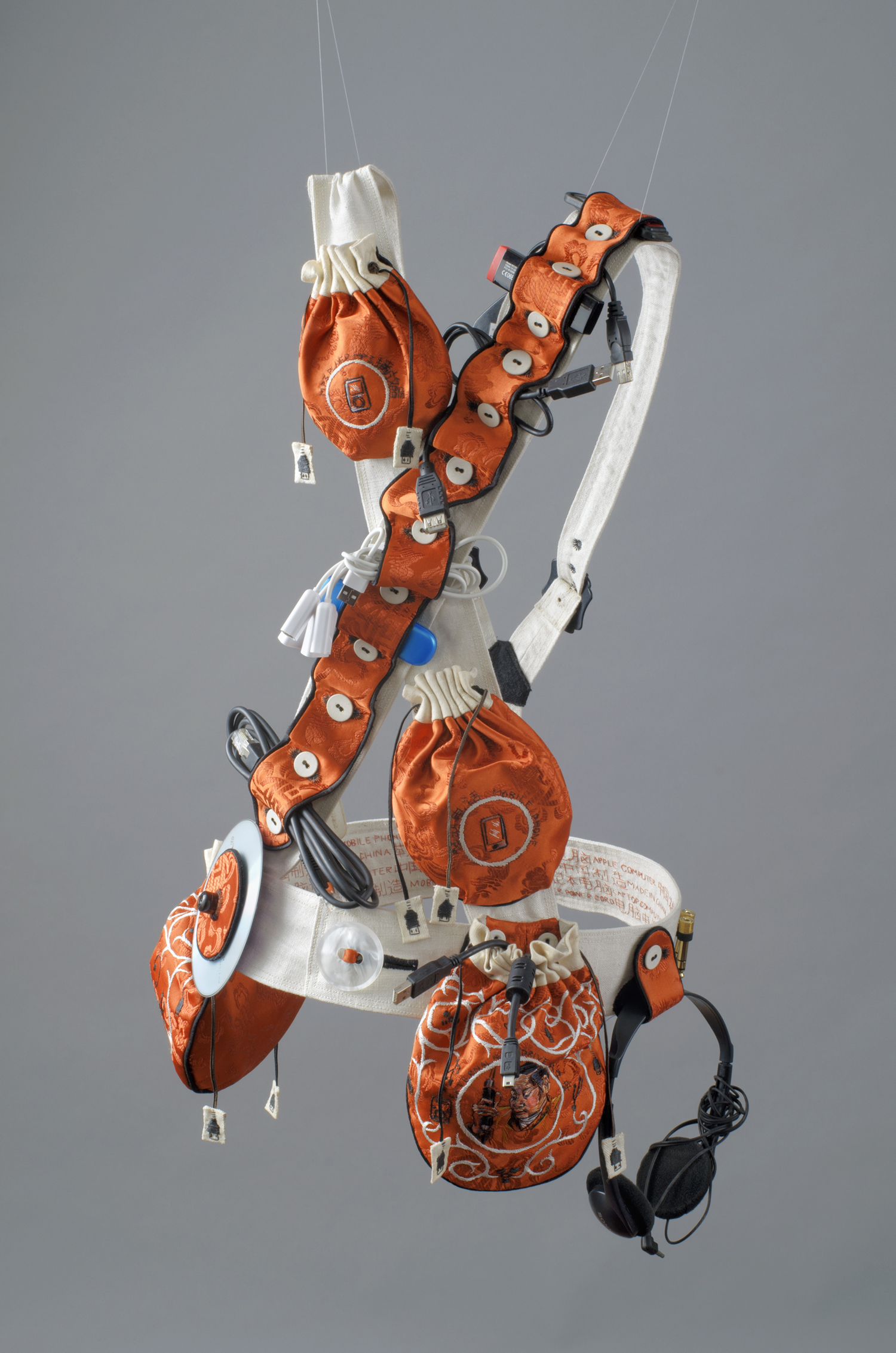
Susie Vickery – Mixed media textiles
Photography by Paul Tucker for the William Morris Gallery Craft Exhibition catalogue
Making a presentation
When submitting art to galleries:
- Read the criteria very carefully
- Make a check list that you can refer to before finally pressing the send button or posting the work
- Images-ensure they are clear and focused and do your work justice. A detail that shows technique can be useful
- Send EXACTLY what you are asked for. For example six images means six, sending 12 won’t help or give you brownie points!
- Sending images electronically is the norm these days. Label each image exactly as requested. If no directions are given my advice is that each image should have your surname, title and size on it if appropriate. DON’T leave the generic file code on it! IMG_2122 does not help the curator identify you or your work
- If you are attaching images to emails make sure they are not too large (check with the receiver if you aren’t sure ) Many places now will use Dropbox, Wetransfer etc so that large files can be sent through
- Send a printed list of images and include prices if requested or appropriate.
- Your CV- Concentrate on clarity of presentation, relevance of items and accuracy and ensure it’s up to date
- Make sure any statement/proposal you have to submit has been checked for spelling and grammar, and DON’T just rely on your computer programme! It’s a good idea to get someone else to check it for you as well
- Finally, try NOT to write and send your proposal by email on the last day! When I received the applications for Everyday Encounters at the William Morris Gallery, the call for applicants had been out for several months. Over 60 came in by email during the final 24 hours. A few were clearly last minute and un-thought out and did not make the final cut
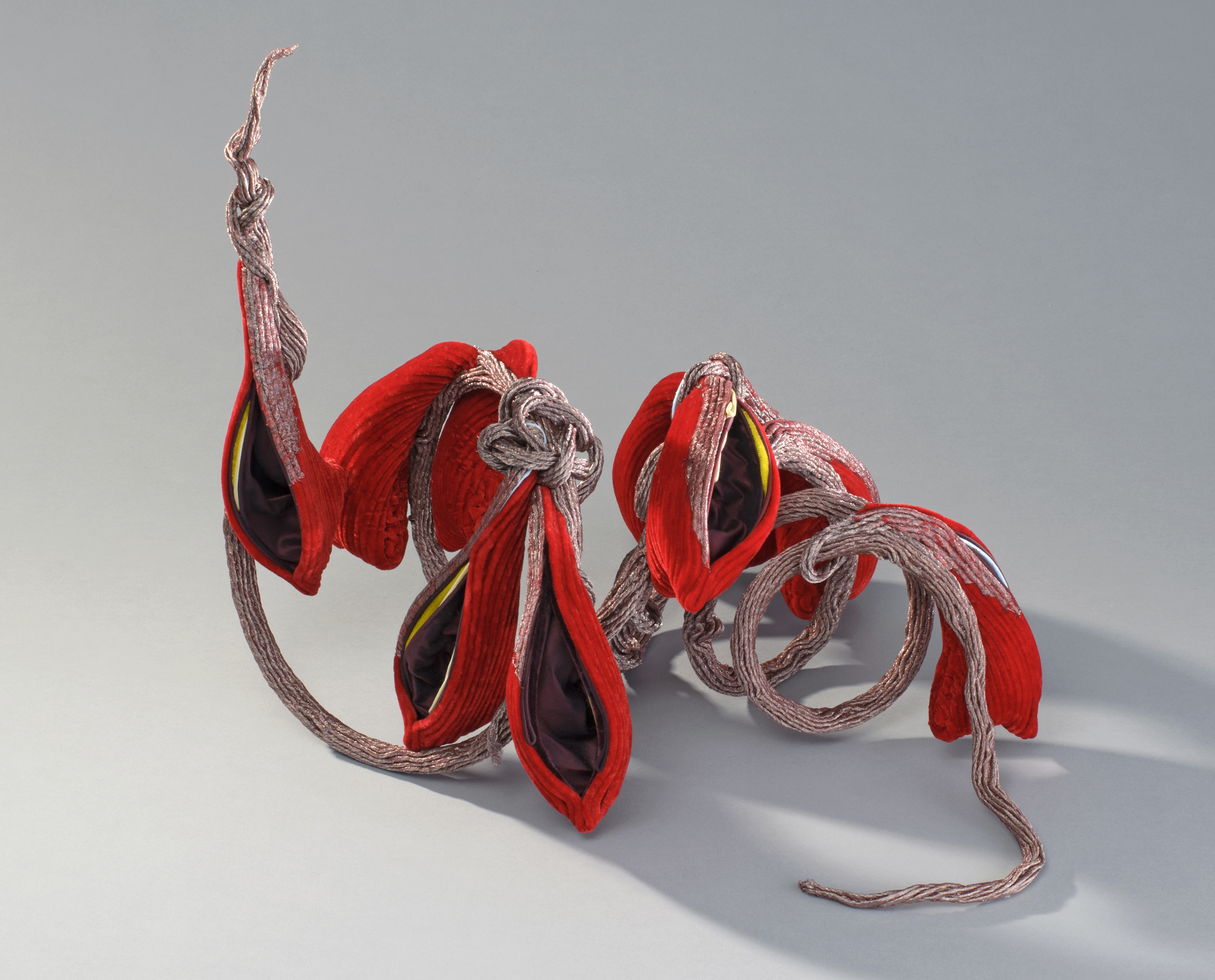
Jenny Ford – Textile sculpture
Photography by Paul Tucker from William Morris Gallery Craft Exhibition catalogue
Selection
At the selection stage of an exhibition, we always look for accuracy, quality of work and its suitability for the exhibition. The following are likely to be automatically rejected;
- Poor images
- Poor presentation
- Not responding to criteria laid out in the submission document
- Late applications
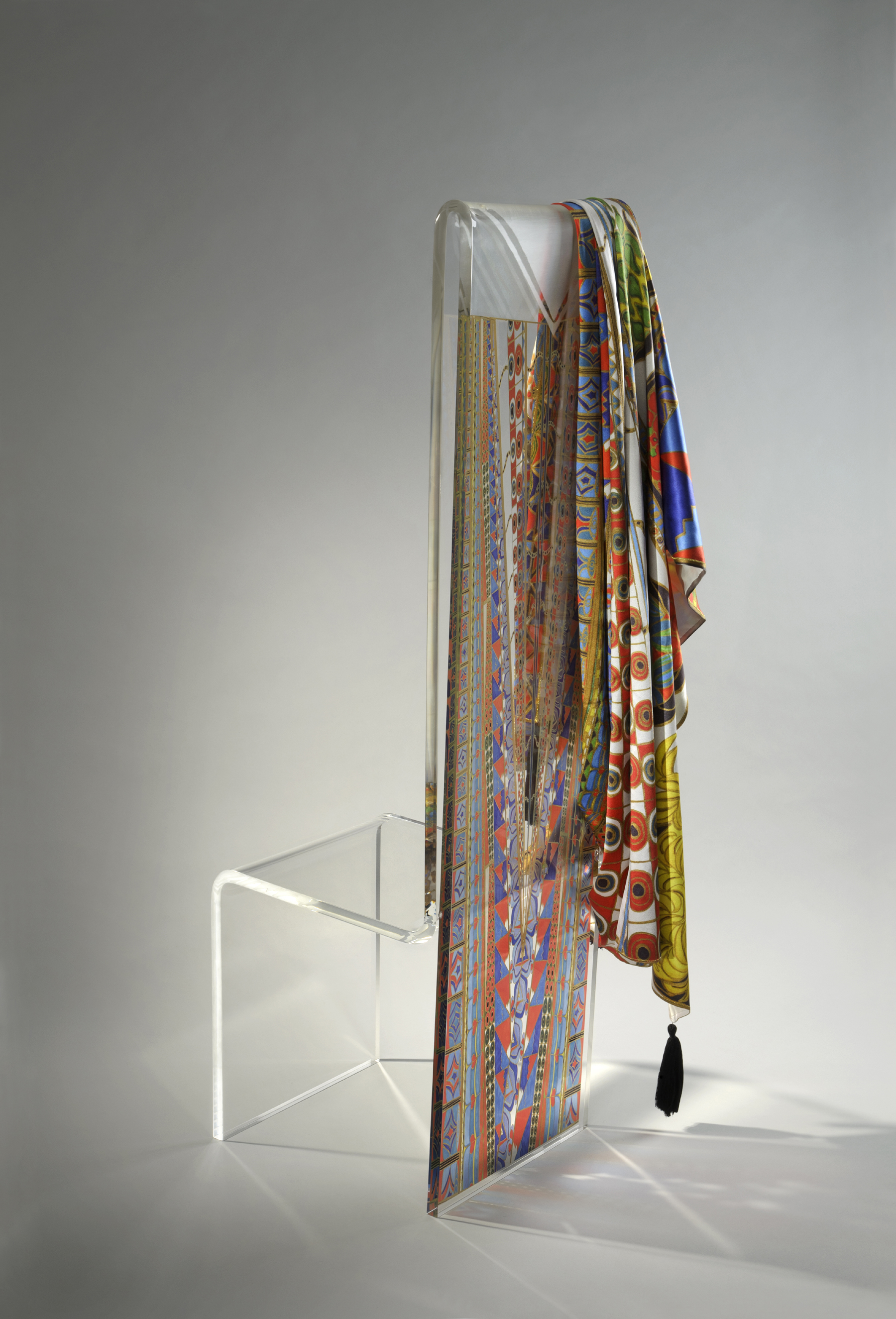
Molly Williams – Digitally printed acrylic chair and throw
Photography by Paul Tucker from William Morris Gallery Craft Exhibition catalogue
Considerations
One of the great joys in being a curator is seeing the huge variety and quality of work made by artists not just in the discipline of textiles but from those working in other media as well. One of the problems is that sometimes you have to leave out makers whose work you really like because of the high standard of applicants or because it isn’t right for the space. The gallery space clearly affects decision making and so I am going to use the exhibition at the William Morris gallery as my example.
The gallery space was quite small but purpose built, and we had over 100 applicants for 25- 30 places. This included a range of 2D and 3D media, from ceramics and glass to furniture, metal and textiles and the applicants were asked to respond to a specific brief.
First to be rejected outright were those who failed to do this, or who showed no evidence of thinking the brief through.
Second to go were those who had poor images. It’s no good submitting an excellent proposal, if the selectors can’t see what your work will look like.
This left us with around 60-70 which we gradually whittled down to 30. There is never complete agreement, compromises have to be made, but in the end we felt we had a really exciting range of ideas and media.
The artists had to create work specifically for the show so the resulting exhibition was one of harmony and extraordinary coincidences. The artists did not see each others ideas before the final submission, yet aspects such as colour, form, pattern and research showed strong affinities to one another and this aided the hanging team.
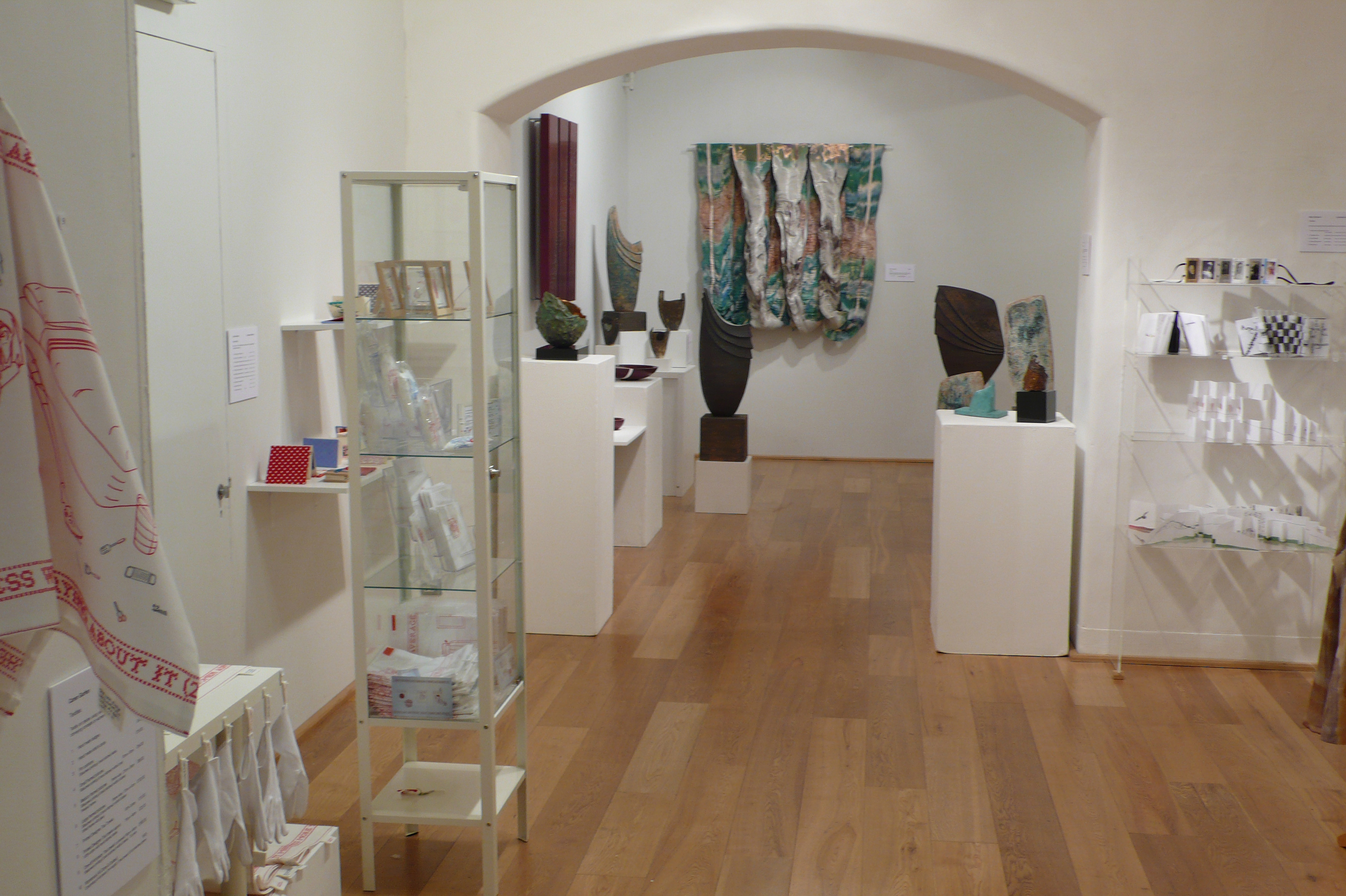
Designer Crafts at the Mall 2008
Preparing your work for hanging
- Re-read instructions regarding hanging methods before you send or deliver your work. The gallery team will expect it to be ready to go- that is fit for purpose.
- Adhere to instructions sent out by the gallery. Wall based work must fit with the gallery’s own criteria whether that is d-rings, mirror plates and so on
- If the work is very difficult to hang, offer to help
- Including a sketch/diagram of how you would like it shown can also be helpful although it might be ignored!
During my time at the Mall Galleries we received work that;
- Had no hanging method attached to the work
- Was not labelled or did not correspond to the list we had received
- Was badly framed
- Was badly packed and thus arrived damaged or broken
I was not involved in hanging the work at the William Morris exhibition but was fully involved at the shows at the Mall.
Juggling the work of some 100 artists presents its own problems, yet at the same time is immensely rewarding. Certain pieces can dictate how or where you begin, perhaps because of scale or special hanging needs. Patterns, colours, shapes emerge leading to groups that work well together giving the exhibition its own unique shape.
Many exhibitors send far too many pieces. An exhibition works not only on what is displayed, but on what is left out. Less is more. Be selective, look at what you have and always send your best. Never substitute an inferior piece just to make up the numbers.
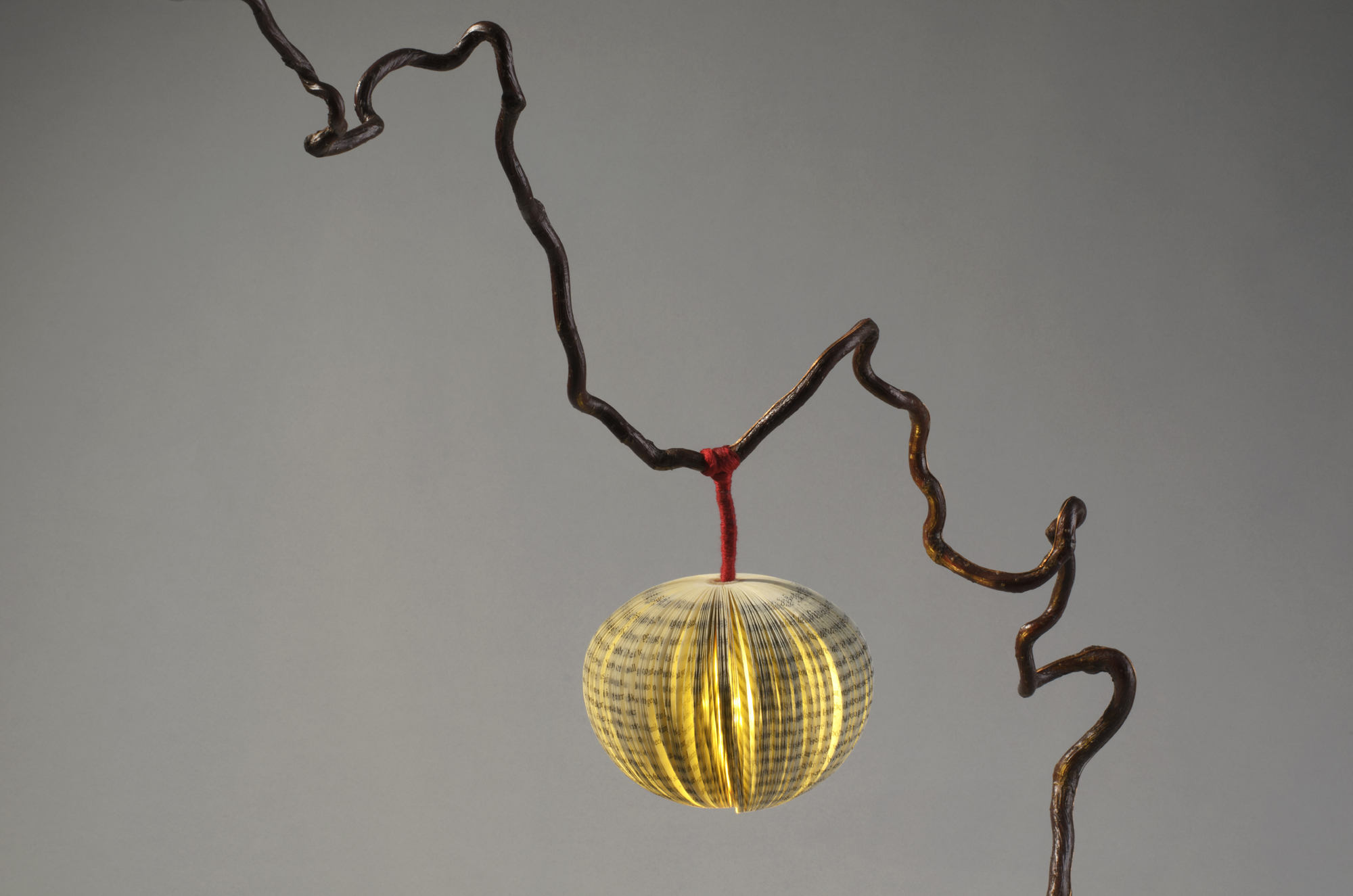
Ros Roberts – Recycled book lamp and nautural materials
Photography by Paul Tucker from William Morris Gallery Craft Exhibition catalogue
Final words of advice on submitting art to galleries
I will leave you with the best piece of advice I ever received on finishing my degree course at Goldsmiths many years ago. The principal of the college knew I had an exhibition coming up. I’ve never forgotten his words and have repeated them many times.
Always show your best, as you will always be judged by your worst.
Carol Naylor is a textile artist and a Fellow of the Society of Designer Craftsmen:
www.carolnaylor.co.uk
www.carolnaylortextiles.com
















This is a really interesting and useful article – thank you Carol. I like to think I do these things automatically – but I bet I don’t all the time! I especially like the advice given to you at the end of your time at Goldsmiths .. in these days when we all seem to be in such a hurry, it is very easy to let second best slip out … I shall write that out and stick it on my wall!!
Thanks so much Hilary, so glad you thought the article was useful especially the last sentence! That advice has really served me well
A very informative article , Carol. It always amazes me just how many artists, even professionals, become amateur when submitting work for exhibitions. Missing statements, bad images, packaging that can’t be reused, no return labels etc,etc. Everyone can learn from this article, including me and anyone who wants to exhibit work would do well to take note of your wise words.
Practical advice and well organized. Thank you, Carol.
The ‘business end’ of our work must match the creative/technical excellence we conceive and produce.
really good to get these comments from other professional artists, thank you Sue and Karen
Have made a link to this in an email to several colleagues. Brilliant advice
cas
Thanks Cas, really does mean a lot when when other professional artists think something you do is worthwhile.
Beautifully put Carol. Sometimes I think I only get invited to exhibitions and galleries because I am organised! and, whilst that may not be entirely true, I do know it helps get me invited back!
There’s nothing wrong with being organised – I think it’s a definite advantage and plays against the stereotype!
Organized
We are artists, so we might as well make our own stereotype in organizing ourselves. At the end we want to be judged for our work and so … we need to show!
Yeah organization according to what? One person might be organizing colors and another might think is a complete mess because there is no organization in shapes. I can’t tell you how many art exhibitions I have been to where the gallery thinks they have an amazing show in their walls and I think this looks to me all disjointed or looks to me completely disorganized. You see the public doesn’t always think your goal and your curatorial skills really match to their own perspectives. I am an artist and I organized my work in a way that makes sense to me because it is my vision in the end what I am trying to show!
I love this article and will be sending friends to read it. Thank you.
Excellent advice!! especially the part about good images
Thank you for your very interesting and useful tips for preparing work for presentation to galleries. It works both ways – unfortunately all organisations that one applies to do not respond – I applied to the Society of Designer Craftsmen at the beginning of September and after many messages by e-mail and phone had a brief acknowledgement of my application then nothing further. Very disappointing to have no communication even if it’s a ‘no’!
Sincerely
Barbara Shaw
Thank you for the good advice. As someone who has never exhibited before how do I approach a gallery in the first place? I have sold in shops but would love to make something for exhibition.
Hi Angela, I’ve only just seen your question so dont know if you will see this reply! When approaching galleries, send a covering letter, CV, links to your website/professional pages/ amd some images clearly labelled as described in the article. You can probably do it all online but if you use “old fashioned post” include a SSE envelope. Also include a short, unpretentious statement about your work. Do some research first, and only send to galleries that you think show work that is in line with your own. ie if you make wall hangings look for galleries who show them! You also need a clearly defined body of work, a nice one-off is unlikely to elicit a response.If you want a longer reply then send me a personal message via email (on my website) good luck Carol
A really helpful article, thanks so much….and your parting words of advice will now stick with me too!
I am eagerly awaiting a response to see if I have got into my first exhibition. I have passed the first stage and now it’s just seeing if my piece does fit in with the rest of the exhibition. I feel that having an option to hang my piece was definitely a plus. It is a life cycle of the silkworm made from all recycled textiles and is in a three tier glass display case. I think if it didn’t have the clips/hooks on it to hang it definitely would not have got to this stage. I got the feeling they were hoping it was bigger even though they had the dimensions of the piece before hand. I am crossing everything but I should have heard yesterday so I am not holding my breath but biting my nails and constantly checking my email.
Thankyou for a great article
Mandy
thank you Carol! I can only confirm. And you last advices the best advice. So true
Great advice I am a textile artist and hope to show some of my work with a friend of mine this year for the first time. We have been looking for suitable venue to sell out work and want to do craft fairs. Both graduates in Fine Art we have turned our skills to art dolls with fairy tales our passion. Wish us luck in 2016 a new venture.
Good luck with your search Gail.
Thank you so much for the advice and information. I am a Korean textile artist in the field of hand embroidery and wrapping cloth(bojagi). This will be greatly helpful to apply and submit.
Thank you for all the wonderful articles
And introduction to new artists. This summer I will be in London for 3 short days. What should I see related to textiles. Thanks so much.
Alison Banks
Alison try the V and A museum, always something on there, currenty and throughout summer a look at “underwear” might be fun! Prism have a great show at Hoxton gallery but only on June1-12, best thing is to google before you come
I have only just read some of the recent comments and I feel humble and amazed at the terrific response. Just pleased I could do something that helps. I learned the hard way too!
I am so pleased to have found this site. There is a wealth of information here for textile artists. So far I have only gone through the ‘Presentation of textiles for exhibition’ and the ‘ Submiting work to galleries’, both topics which are really important for the textile artist. These topics generally are only just touched upon in most books. I am looking forward to reading the other articles. Thank you all for generously sharing your knowledge.
Thanks Sheila, Im delighted this article is still getting attention
I am so please to have been sent this artical. It has worked as an aid memoir as I am about to send in an application for an exhibition in the spring. I have been to your workshop at the Weyvalley work shop group in Surrey domes years ago and have always found you inspirational. Many thanks for your words of wisdom
Vera Gilbert I have just read your comment and am very glad you found the article useful. Glad the workshop was helpful as well!
you should check out these photos they blew me away
Click my name to see the site this girl is amazing
outstanding website great ideas for my art projects
GREAT WEBSITE FOR MY ARTWORK.
Carol, thank you for this wonderful information. I was wondering if you could provide any recommendations for labeling/signing your work for galleries. My fibre pieces are mounted on mat board and framed behind glass. Where should the worked be signed and as a collection should they be numbered on back? Any information regarding this matter would be fantastic.
Hi Sharon Hamlin only just seen this question from you. I sign mine at the right hand bottom of the mat/mount under the embroidery. Some of my works are attached (sewn) to box canvases and again I sign in the same place. When the work goes to a gallery or if I sell from home the title is always on the back of each work. I hope this helps if you see it, Carol